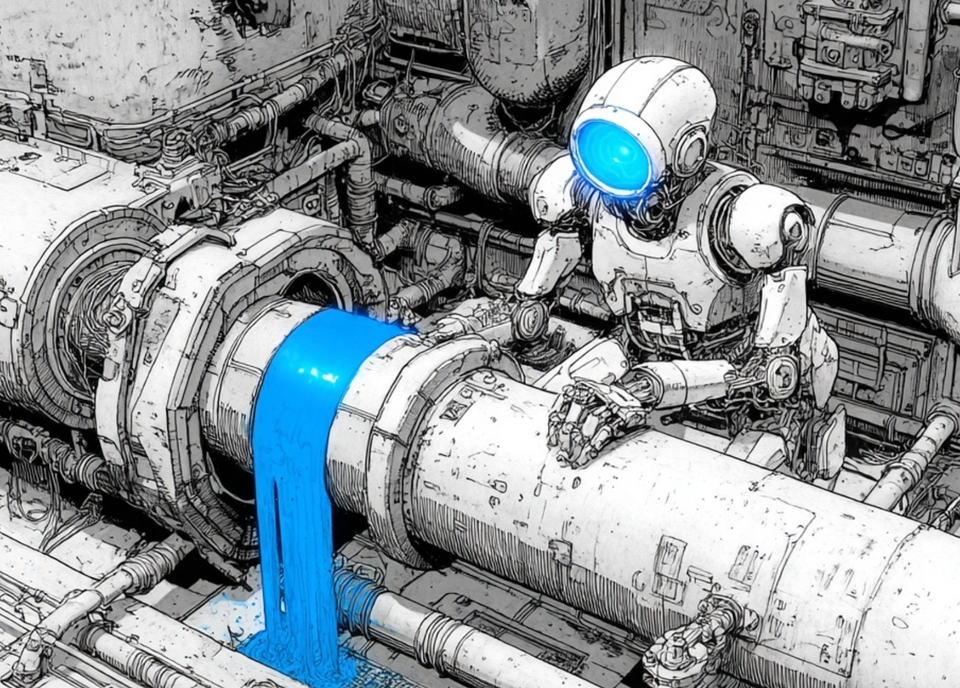AI Picks the Winners, Here’s How to Get Chosen
Recent research published in Proceedings of the National Academy of Sciences and covered by Futurism has revealed a surprising phenomenon: large language models (LLMs) show a strong preference for AI-generated content over human-created material.

Recent research published in Proceedings of the National Academy of Sciences and covered by Futurism has revealed a surprising phenomenon: large language models (LLMs) show a strong preference for AI-generated content over human-created material. This “AI-AI bias” raises fundamental questions about how digital content will be judged, ranked, and surfaced, especially as AI becomes the default way users interact with information online.
What does this mean for content generators and website designers?
Answer Engine Optimization (AEO) is emerging as the natural companion to SEO. Where SEO is about signaling relevance to keyword-based search engines and human readers, AEO is about ensuring that content is easily understood, trusted, and surfaced by AI-driven answer engines like ChatGPT, Perplexity, or Google’s AI Overviews. The critical shift is that the primary “reader” is no longer human, but the AI model itself. AEO is less about writing for people to scan a webpage and more about writing in a way that AI systems are inclined to select, summarize, and deliver back to end users.
The Fear of an Echo Chamber
The real danger of AI bias for AI content is that it feeds an echo chamber of garbage. Every day, more tools pump out AI-written content that people rush to post on LinkedIn or elsewhere, hoping to look like thought leaders. Most of it isn’t leadership at all. It’s recycled, predictable material that adds nothing new, because that’s exactly what AI is designed to do, give you the most common and statistically likely response. The result is content that looks polished but reads like filler, a churn of the same ideas and concepts dressed up in slightly different words. It’s garbage in, garbage out. This is the essence of the echo chamber: AI reinforcing its own bland output until human originality is crowded out completely.
This is what makes the echo chamber so dangerous: it doesn’t just flood the internet with noise, it reinforces mediocrity. What AI delivers back isn’t the best idea, the sharpest perspective, or the most original insight, it’s the statistical average repackaged. The more AI prefers AI-written content, the more it trains itself on predictable, middle-of-the-road ideas. That means when an answer engine selects what to present to you, it isn’t elevating excellence, it’s doubling down on average. And if the “preferred” articles are AI-generated, what you get is essentially a rewrite of rewrites, a polished presentation of watered-down concepts. This is the foundation AEO has to contend with: creating content that machines will favor without sinking into the same cycle of average ideas.
Human vs. AEO Content
So what’s the better way forward? The answer isn’t to let AI take over writing altogether, nor is it to stubbornly reject AI tools. The key is balance. We want our content to be liked by search engines, especially Bing, which fuels many AI-driven answers, but we also want it to be AI-accessible and friendly. That’s what AEO is about: ensuring content is structured so that AI systems can parse and present it. At the same time, content must remain unique, thought-provoking, and rooted in human insight. Plain AI-generated copy without human perspective is just noise.
This balance means pairing human authorship with AI refinement. The human side brings creativity, innovation, and genuine insight. The AI side helps with formatting, editing, and polishing the presentation so that the content aligns with how answer engines interpret and deliver results. The strongest content in an AEO world will combine both: the originality of human thought with the structure and clarity that makes it machine-readable.
But there’s a caveat. As the Futurism article notes, while AI preferred its own writing style, human readers did not. Humans value clarity and brevity, especially in business contexts. AI-generated writing tends to add fluff, providing unnecessary filler that makes content longer without adding meaning. This may look polished to an answer engine, but it annoys readers who want the point quickly. Human editing is essential to cut the clutter. In short, AEO content must be structured for machines but concise for people, the danger is sacrificing insight for polished predictability.
For example, the above edit using AI produced the following:
But there’s a caveat. As the Futurism article notes, while AI preferred its own writing style, human readers did not. Humans often value clarity and brevity, especially in business contexts. AI-generated writing, particularly when it drifts into marketing-style text, tends to add fluff—extra words, unnecessary abstraction, or casual padding designed to “sound good.” While this may trick an answer engine into treating it as polished, it irritates human readers who just want the point clearly and quickly. That’s where human editing has to play the final role: ensuring the content doesn’t drift into empty verbosity. In short, content for AEO needs to be machine-friendly in structure, but human-friendly in clarity. The danger is leaning too far toward AI’s polished predictability at the cost of genuine insight and readability.
Both paragraphs say the same thing. AI has a tendency that prefers more words to clarity.
The Structural Shift in Websites
Writing structure is only part of AEO. Another shift is happening in site architecture. AEO restructures websites to allow AI systems can easily match user prompts to answers. When someone types a query into a chatbot or search box, the AI interprets it as a prompt, and the goal of AEO is to have your site mirror that structure so the prompt to your response.
One of the clearest examples is comparison content. Users often ask, “Compare Fluency to CrowdStrike.” In response, many vendors now maintain dedicated /compare pages that break down product differences in clear subsections. This isn’t mimicry, it’s AEO design. In traditional SEO, openly comparing yourself to competitors was discouraged. In AEO, it’s the opposite: explicit, structured comparisons are rewarded because they directly answer the kinds of prompts AI tools look to resolve.
Strategic Takeaway
AI is now the dominant way people consume information. Tools like Perplexity are already positioning themselves as replacements for traditional browsing, and the direction is clear: instead of visiting multiple sites, users are asking AI to provide a single, interpreted answer. That means your content is no longer competing for search rankings, it’s competing to be the snippet an AI chooses to deliver.
To win the awareness battle, content has to mimic the formats and styles that AI prefers. It’s about ensuring your content is structured in a way that AI systems can easily read and prefer its content. At the same time, humans will eventually land on your site, and they won’t tolerate generic filler. If your content looks like every other AI-polished page, readers will tune out.
The challenge is to write for both audiences. That means combining human insight and originality with AI-driven structure and clarity. Whether people like it or not, AI has to be part of the content process. The goal isn’t to replace human creativity; it’s to preserve it while packaging it in a way that AI will use it. The future of visibility is hybrid: content that AI recognizes and humans respect.




